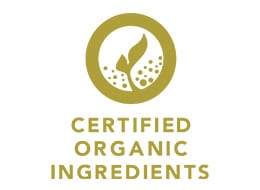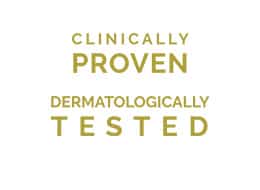Aging is inevitable, so regardless of how hard you try, this process can’t be stopped, but what you can do is reduce the appearance of its signs in the form of wrinkles, fine lines, crow’s feet, etc. Antioxidants work wonders when it comes to thwarting environmental damage that slowly changes skin, causing it to look and feel older, something pretty much everyone wants to avoid. They can also help reignite skin’s vitality, vibrancy, and overall healthy look and feel.
How do antioxidants work?
Antioxidants play a unique role when it comes to diminishing the appearance of fine lines and wrinkles. Environmental damage such as unprotected exposure to the sun, gradually chips away the skin’s natural ability to look and feel healthy. As this damage builds up, skin gradually loses its ability to recover and bounce back as it once did. After years of damage, the ability of the skin to fight back becomes overwhelmed, so the signs of aging begin to appear in the form of lines and wrinkles.
When you use antioxidants in skincare, it helps create a barrier on the skin’s surface, to prevent further deterioration. They calm inflamed and stressed skin, while defending against visible effects of pollution that is faced by us on a regular basis. What happens as a result of applying antioxidants to your face is truly impressive: the skin’s appearance quickly begins to turn around. It regains a firmer feel and more even skin tone—and those signs of aging are visibly reduced.
What are the results you can expect?
Please keep in mind that while topical application of antioxidants to the skin helps to protect the skin from ongoing environmental assault, it isn’t a magical formula that is going to turn back time to make you look 20 years younger. Moreover, the effects won’t be noticeable overnight. The claims attributed to these wonderful ingredients are more often than not overblown or a big stretch of what scientific research has shown to be true.
Antioxidants are one of the beneficial ingredients that can be used in skincare products to get younger-looking, radiant, and smooth skin. Antioxidants should be joined by skin-replenishing ingredients like ceramides, hyaluronic acid, and glycerin plus a range of skin-restoring ingredients like retinol, peptides, and niacinamide. The other ingredients enhance the effect of antioxidants to a large extent.
You also have to ensure consistency with your beauty routine – you can’t apply these products randomly at odd times during the day. Shield your skin from sun exposure every day with a broad-spectrum sunscreen having sun protection factor or SPF of 30 or more.
Be careful before buying – antioxidants in skincare require special packaging
Antioxidants are definitely potent components, but even the best of those are delicate and should be packaged in containers to guarantee they remain effective. If those standards aren’t met, your skin won’t get the full benefits. For instance, antioxidants break down in the presence of air and light, so if an antioxidant-rich moisturizer, serum, or other product is packaged in a jar or in clear packaging, it is likely to lose its quality within just a few weeks (could be days as well).
Exercise caution before buying any anti-aging products containing antioxidants – they should be sold in opaque tubes or bottles, and check to see that the opening of the container is small enough to minimize or restrict exposure to air.

What are some of the natural antioxidants?
Figs
They are high in natural sugars, soluble fibre, and minerals. They contain potassium, calcium, magnesium, iron and copper, along with vitamin A, E and K that are excellent sources of antioxidants. Altogether these phytochemical compounds in fig fruit help scavenge harmful oxygen-derived free radicals from the human body and thereby protect us from cancers, diabetes, degenerative diseases, and infections.
Olive Oil
While olive oil has a lot of benefits, extra virgin olive oil is more popular these days. It contains small amounts of vitamins E and K, while being packed with powerful antioxidants that are biologically active and can reduce risk of chronic diseases. They help to fight inflammation and protect your blood cholesterol from oxidation.
Dates
Dates have flavonoids, carotenoids, and phenolic acid, which have incredible anti-inflammatory properties that help to lower the risks of several types of disease, apart from undoing damage caused by free radicals.
Pomegranates
The seeds of this fruit get their bright red hue from polyphenols, which are great antioxidants. Compared to other fruit juices, pomegranate juice contains more antioxidants, in fact, much more than red wine and green tea. They remove free radicals, protect cells from damage, and reduce inflammation.
Grapes
This fruit is often lauded as a powerhouse of antioxidants as they have a wide range of phytonutrients right from carotenoids to polyphenols. Extensive research shows that phytonutrients can help to prevent certain kind of cancers and maintain hearth health. Among polyphenols, resveratrol is known for its miraculous properties such as inhibiting the formation of free radicals that could cause cancer and dilating blood vessels to ease blood flow and lower blood pressure.
Honey
Honey contains nutraceuticals that efficiently remove free radicals from the body, thus improving immunity against several chronic health conditions. The powerful antioxidant properties of honey are due to several compounds, including phenolics, peptides, Maillard reaction products, organic acids, enzymes, and other minor components.
Nigella Sativa (Black Seeds)
Compounds like thymoquinone, carvacrol, t-anethole and 4-terpineol, are responsible for its potent antioxidant properties. It can not just protect against chronic conditions, including cancer, diabetes, heart disease and obesity, but help to neutralize harmful free radicals and prevent oxidative damage to cells.
While topical antioxidants in the form of skincare products like creams and lotions can make a huge difference in slowing down aging of the skin, it is a good idea to include the above mentioned natural antioxidants in your diet, so you can reap the benefits of both types. So don’t be dismayed to find a wrinkle or groove on your skin – be patient and you will soon see the difference!
References:
- ‘The health benefits of figs’, BBC Good Food. https://www.bbcgoodfood.com/howto/guide/health-benefits-figs (accessed Apr. 18, 2020).
- ‘11 Proven Benefits of Olive Oil’, Healthline. https://www.healthline.com/nutrition/11-proven-benefits-of-olive-oil (accessed Apr. 18, 2020).
- ‘8 Proven Health Benefits of Dates’, Healthline. https://www.healthline.com/nutrition/benefits-of-dates (accessed Apr. 18, 2020).
- ‘Grapes: Health benefits, tips, and risks’. https://www.medicalnewstoday.com/articles/271156 (accessed Apr. 18, 2020).
- ‘12 Surprising Benefits of Honey’, Organic Facts, Oct. 02, 2007. https://www.organicfacts.net/health-benefits/health-benefits-of-honey.html (accessed Apr. 18, 2020).
- ‘9 Impressive Health Benefits of Kalonji (Nigella Seeds)’, Healthline. https://www.healthline.com/nutrition/kalonji-nigella-seeds (accessed Apr. 18, 2020).









